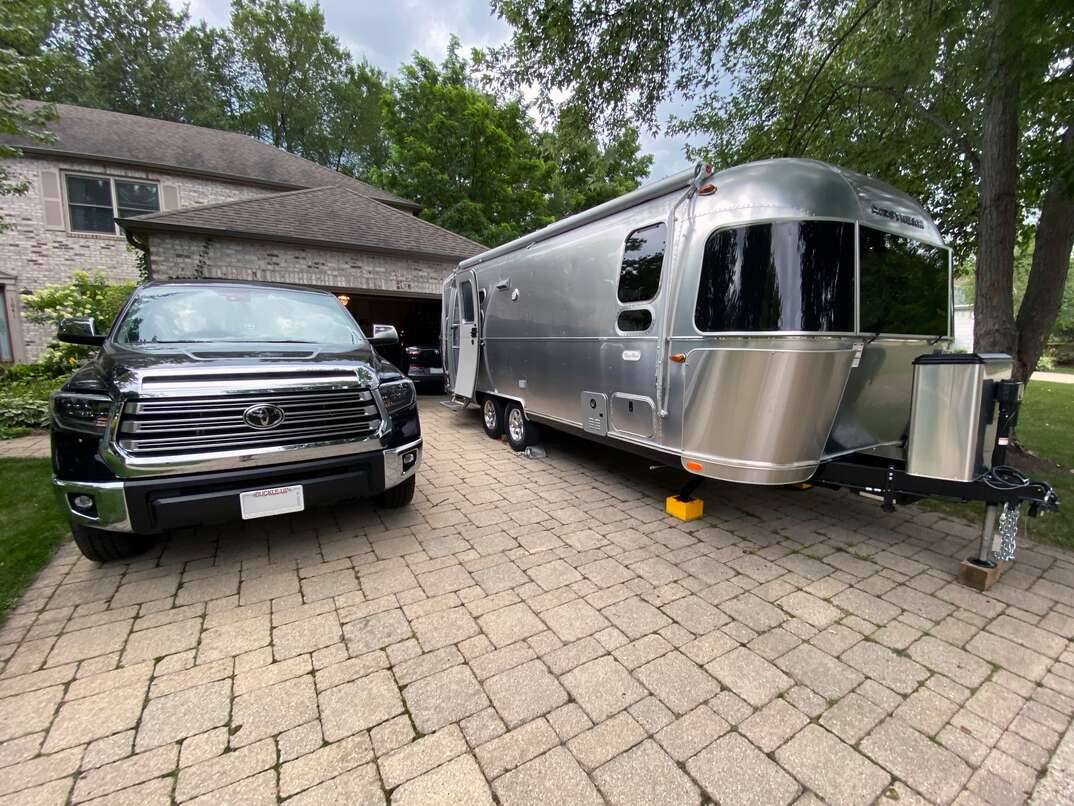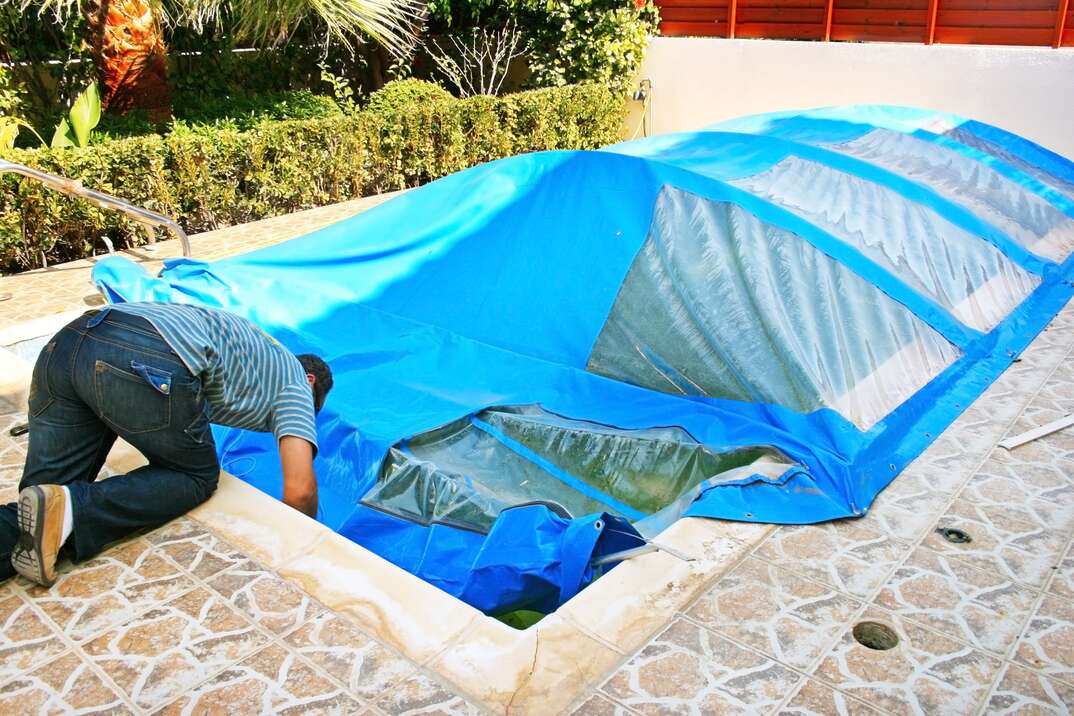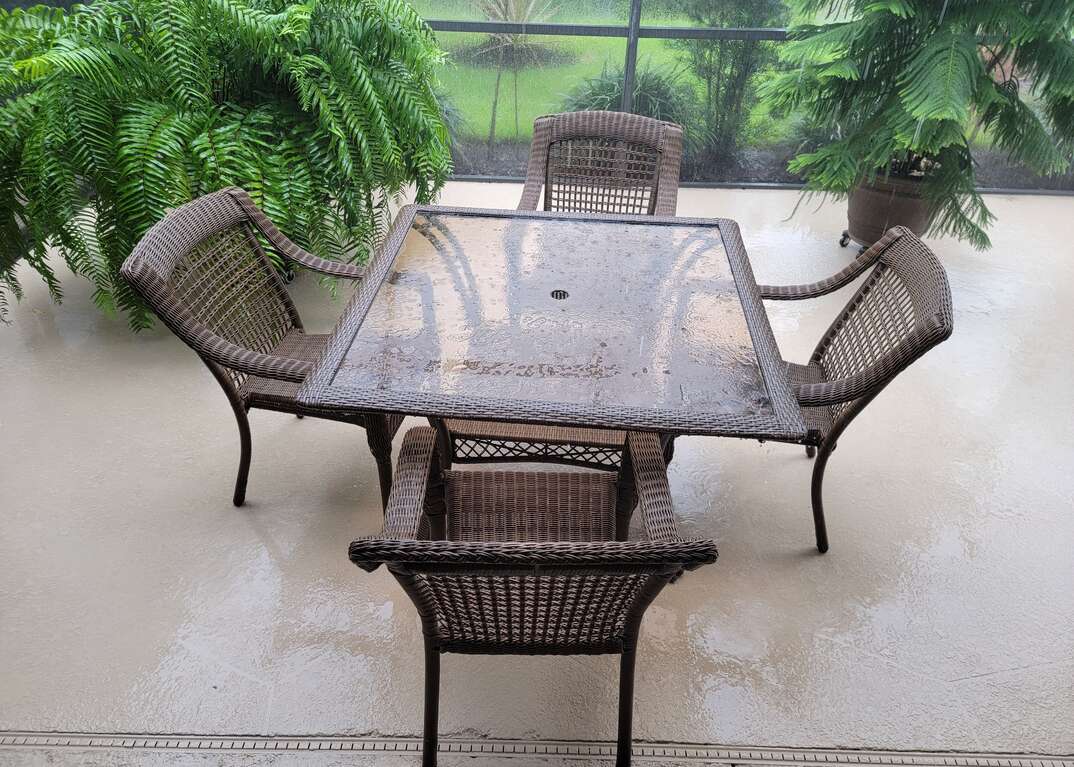4 At-Home RV Parking Solutions

Creating At-Home RV Parking at a Glance
- Transform the side yard
- Build a garage
- Construct a carport
- Expand the driveway
For many avid travelers, recreational vehicles provide freedom. They’re also a cozy home on wheels whenever you hit the road. Free overnight parking for these oversized vehicles can be found throughout the country at truck stops, rest areas and even in Walmart parking lots. Unfortunately, finding long-term motorhome parking when you aren’t traveling can be challenging and expensive. Costs typically range from $50 per month for simple outdoor storage, up to $400 per month for heated storage units.
This May Also Interest You: How Much Does It Cost to Build a Garage?
It's no wonder why more and more people are choosing to park their RVs at home. Unfortunately, not all homeowners associations are hip to the idea. But you may be able to circumvent their rules by parking your RV in a way that won’t make it the neighborhood eyesore. Here’s how.
Can I Park an RV in Front of My House?
If you own an RV and intend to park it on the street in front of your house, check your city and neighborhood regulations first. Unfortunately, only a few cities will give the go-ahead for long-term motorhome parking on the street.
In some locations, parking a motorhome on a residential street overnight is prohibited altogether. In other areas, parking your RV on the road is legal as long as you obtain a permit. These permits vary in cost by locality, and they typically only allow parking for short periods of time. Parking regulations may also differ between motorized and nonmotorized vehicles.
If your city doesn’t let you park an RV on a residential street, that doesn't mean you're stuck with renting storage space. Many localities do permit motorhome parking directly on your property — either in your driveway, your backyard or tucked away in a garage or carport.
At-Home RV Parking Ideas
If you’re planning on parking your RV at home and you’ve obtained any necessary permits, it’s time to consider how and where to store a large vehicle. There are several ways to make a suitable space for parking your motorhome on your property. Try these:
Transform Your Side Yard into a Parking Space
For most homeowners, side yards are the least used part of their property, which makes these spaces ideal for parking an RV. You won’t interfere with your neighbors’ views, either.
Because motorhomes should be parked on stable surfaces, you’ll want to create a firm base for your parking space. The foundation may be created using gravel, concrete or asphalt, or you can opt for paving stones if you don't mind spending the money. Consider adding fencing or a privacy screen to set off the parking area so it blends better with the landscape.
If you don’t have sufficient space in your side yard, you can perform similar landscape alterations in your backyard. Yards that back up to wooded areas are perfect for parking RVs because you won't risk obstructing a neighbor's view.
Build a Garage
Building a garage suitable for an RV is probably the most expensive option for parking. According to Buildings Guide, construction costs typically range from $7,500 to $14,500 for the basic structure alone. The cost of garage doors, windows and floors can add on thousands, depending on your choice of materials and the installation process. When considering costs, you may also want to keep in mind the expenses associated with future maintenance and repairs of the structure.
On the plus side, a garage is a great way to keep your RV secure and protect it from the elements. Keeping your RV parked in a garage on your property also makes it easier to prepare for trips and to clean up your RV upon returning. This option is especially attractive if you live in a cold-weather climate.
An RV garage needs to be taller than a typical garage. It should have at least a 14-foot clearance, plus space for the garage door to open. You should also leave enough room on all four sides so you can fully open the RV's doors and maneuver around the vehicle comfortably. When constructing a garage, you may also want to include access to essential utilities such as electricity, water and sewage.
Construct a Carport
If you like the idea of a garage but not the price tag that comes with it, consider a carport. Although it offers less protection from the elements, a carport still provides shelter for your vehicle, and it comes at a much lower cost.
Metal carports generally come precut to the measurements you need and are assembled using a basic nut-and-bolt system. Most metal carports can be put together within hours, and installation can be completed by knowledgeable DIYers or a trusted contractor.
Expand Your Driveway
Adding on to your driveway is an easy way to add space for RV parking. Whether you opt for concrete or asphalt, it’s less costly than building a garage. By parking your motorhome in your driveway, you can minimize the risk of theft and easily hook it up to your home’s electricity.
Before beginning a driveway expansion, you should always check local regulations because some cities or homeowners associations limit the length of the RV that can be kept in a residential driveway. Others require a nonmotorized trailer to be attached to a motorized vehicle.
When expanding your driveway, be sure to consider the dimensions of your RV. Include space to freely walk around it and maneuver your cars in and out as needed.
More Related Articles:
- Is a Concrete or Asphalt Driveway Cheaper?
- How Much Does a Concrete Driveway Cost?
- How Much Does an Asphalt Driveway Cost?
- How Much Does a Detached Garage Cost?
- Is a Smart Garage Door Opener a Wise Investment?
At-Home RV Parking Considerations
Parking at home can be a cost-effective way to store your motorhome when you're not on a road trip, but if you’re going to keep your vehicle on your property, it’s important to put safety first and follow good etiquette. Here are a few things to keep in mind if you’re parking your RV at home:
- Don’t obstruct views. Consider your neighbors’ views. If your vehicle interferes with the view from their windows or yards, they’re likely to complain.
- Don’t create a hazard for drivers. Your neighbors should always be able to navigate the street safely. That means having a clear view of cars, cyclists or pedestrians that are coming down the block.
- Don’t park too close to public sidewalks. Blocking sidewalks can cause safety issues, put you in conflict with neighbors or violate local ordinances.
- Keep appearances in mind. Fencing, greenery or a privacy screen can help disguise your vehicle, keeping your neighborhood looking great.
Creating an Oasis for Guests
If you’re planning on parking your RV in the backyard, one great way to use it in the off-season is to create a private space for guests. By providing utility hookups, cable and Wi-Fi, you can accommodate overnight visitors in style, adding extra room during the holidays or for special events. Here are a few ways to make your RV comfortable for your guests:
- Stock it with fresh sheets, towels and essential toiletries, and fill the refrigerator with plenty of food and beverages.
- Leave instructions for major systems and appliances to guide guests who have no experience with motorhome life.
- Consider adding a small, paved patio or grassy area nearby for kids and pets so visitors have an outdoor space of their own.
Since we’re all home now more than ever, being prepared for unexpected home repairs with a plan from HomeServe is important. Having a plan in place gives you peace of mind knowing that you can simply call our 24/7 repair hotline for covered breakdowns. See what plans are available in your neighborhood.


